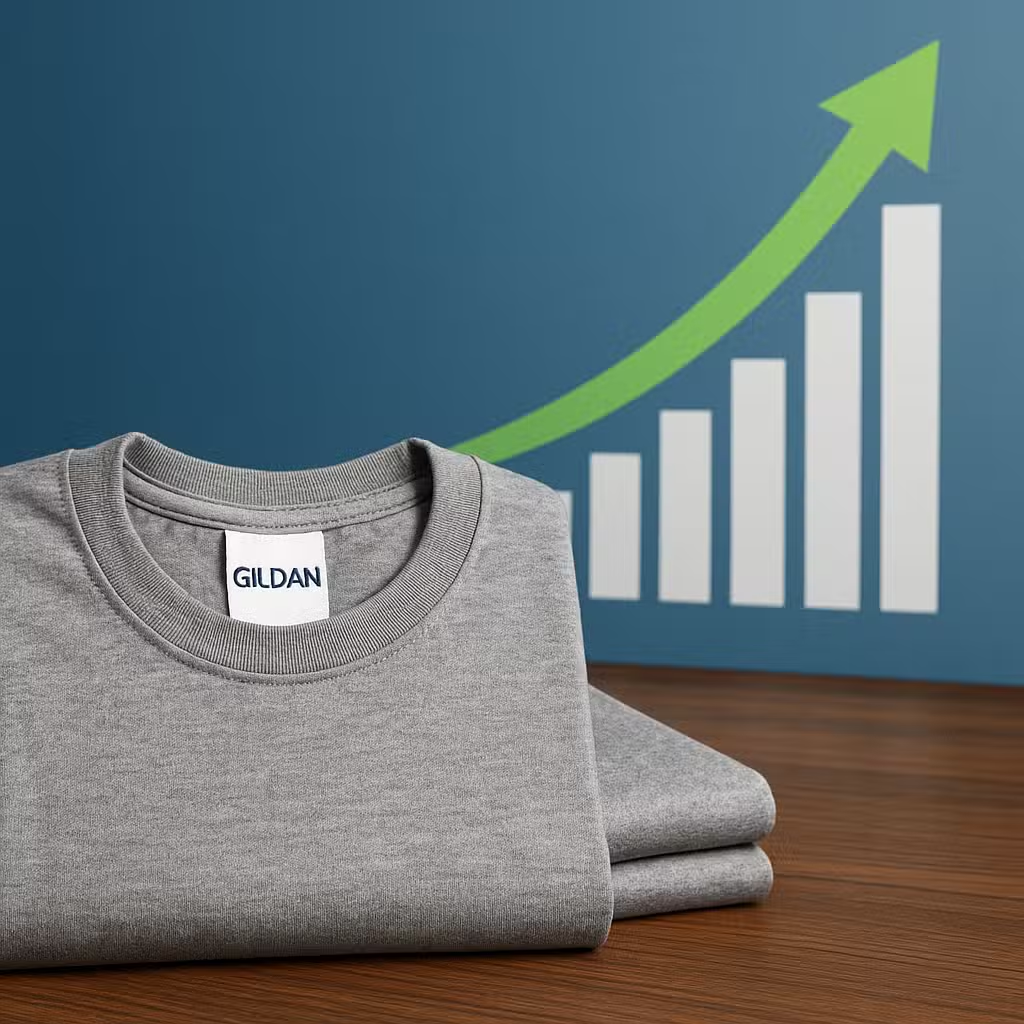Gildan’s T-Shirt Brand Gains Market Presence, Signaling Growth Opportunities for Investors
Imagine finding a favorite pair of shoes that are so comfortable, you end up wearing them everywhere—from the playground to family trips. That’s what Comfort Colors t-shirts have become for many people: a go-to, trusted choice for everyday wear.
Why Investors Should Care
Comfort Colors is a brand owned by Gildan, a big name in the clothing world. Lately, Comfort Colors shirts have exploded in popularity, especially with younger shoppers. Whenever a brand catches on like this, it can make a big difference to the company’s profits and even the stock market.
If you’re an investor, understanding why people love Comfort Colors—and how Gildan is using this momentum—can help you make smarter choices about your portfolio.
The Bull Case: Why the Hype?
- Strong Growth: Comfort Colors grew about 40% in 2024 alone, according to Gildan executives. That’s helped boost Gildan’s whole activewear business by 6% this year.
- Brand Loyalty: Many fans, especially Gen Z, say Comfort Colors shirts are their favorites because they’re soft, colorful, and have a “vintage” feel.
- Sustainability: The shirts use a dyeing process that needs less energy and water, which appeals to eco-conscious shoppers.
- Market Expansion: Gildan plans to grow Comfort Colors into hats, bags, and women’s clothing by 2026, which could attract even more customers.
- Stock Outperformance: Gildan’s stock has jumped over 175% in the last five years, almost double the return of the S&P 500 in the same period.
A study by McKinsey shows Gen Z shoppers are more likely to buy brands that match their values, like comfort and sustainability, which lines up perfectly with Comfort Colors’ strategy.
The Bear Case: What Could Go Wrong?
- Higher Prices: Comfort Colors shirts can cost more than some competitors, which might scare off budget-conscious buyers.
- Supply Issues: The brand faced shortages during the pandemic, and future disruptions could hurt sales.
- Brand Confusion: Many customers don’t know Comfort Colors is owned by Gildan, so the parent company may not get full credit for the brand’s success.
- Competition: Other brands, like Nike, also compete for the same young shoppers and have more direct-to-consumer sales strategies.
- Changing Trends: Fashion is fickle—what’s popular now may not stay that way.
It’s also worth noting that, while Comfort Colors is hot right now, the bulk of its business comes from selling in large batches to printers, not directly to shoppers. If group orders slow down, sales could take a hit.
Bigger Picture and Sector Impact
Comfort Colors’ success shows how a simple, well-made product can become a cultural hit. The brand is everywhere: college campuses, music tours, bars, and even sports teams’ merchandise. This “cool factor” has helped it become a staple for group events and organizations.
For the clothing sector, Comfort Colors proves that old-school basics can still win if they feel authentic and match what young people want. Meanwhile, Gildan’s move to buy Hanesbrands signals a push to dominate the basics market even further.
Even in tough economic times, people keep buying staple items like t-shirts. According to Statista, the global apparel market is expected to keep growing, which bodes well for companies like Gildan.
Investor Takeaway
- Watch Gildan’s Earnings: Pay attention to how Comfort Colors’ growth affects Gildan’s financial results, especially with new product launches coming soon.
- Diversify Within Apparel: Brands that focus on comfort, sustainability, and youth trends—like Comfort Colors—may offer more upside than fast fashion or luxury brands right now.
- Monitor Consumer Trends: Keep an eye on Gen Z’s shopping habits and values, since their preferences are shaping the next wave of retail winners.
- Stay Alert to Risks: Be aware that supply chain problems or changing tastes could quickly cool off a hot brand.
- Think Beyond the Label: Sometimes the brands driving growth for a company are not front-and-center—dig deeper to spot hidden gems in a company’s portfolio.
Comfort Colors’ story is a reminder that even the simplest products can deliver big returns—if they’re done right and catch the cultural moment.
For the full original report, see CNBC







